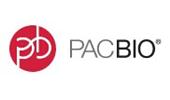 Pacific Biosciences
Pacific Biosciences
美国太平洋生物科学公司Pacific Biosciences (PacBio) www.pacificbiosciences.com www.pacb.com
科学家们完成第一个人类基因组测序整整花了13年的时间,耗费了30亿美元的费用。随着计算机运算速度提高和其他技术进步的影响,目前一般实验室的基因组测序还是要经过长达6周的时间才能完成,并且整个工作需要10万到30万美元的资金。
一个20年来最具爆炸性的消息
近日,美国太平洋生物科学公司(Pacific Biosciences)通过《财富》杂志展示了公司最新研发成功的个人基因组测序样机,并宣布公司将在2013年上市销售个人基因组测序仪。该仪器大小类似家用微波炉,将在15分钟内完成基因组测序,并且每个人测完整个基因组的费用不到1000美元,届时每个人将有能力负担个人基因组的测序费用,基因组测序对普通大众也是唾手可得的事情。
该样机的潜力立刻在遗传学界引起轩然大波,许多专家表示,如果产品真的能在2013年上市,基因组研究将会发生天翻地覆的变化,甚至有人表示这是20年来所听到的最具爆炸性的消息。
专家们表示,一旦基因组测序仪上市,人类基因组测序就像核磁共振仪那样简单方便,每个人的基因秘密将得以破解。科学家们就能最终找到阿尔茨海默氏症、白血病、前列腺癌等疑难疾病的变异基因,制药公司也能设计出更有针对性的治疗药物,医生们也能预测人们可能会得什么病,并提前预防治疗。
目前的样机比厨房用微波炉稍大一点,机器中装有电子管、激光器、透镜以及反光镜,是集合光学联网技术、材料科学、生物物理学以及视频技术等综合技术组装而成的。
“窃取人类自然本性”的聚合酶
该测序仪的工作原理是,将基因组的DNA断开成许多很小的片段,这些小DNA片段制成溶液后滴入测序仪内的金属薄片上,金属薄片中分布着3000个纳米级小孔,这些纳米孔的直径不到70纳米,被滴入薄片上后,小DNA片段会分散到不同的纳米孔中。每个纳米孔中涂有一种特殊的酶——DNA聚合酶,DNA聚合酶的特性是,能够沿着DNA片段的双链结构游动,在游动的过程中将DNA片段的双链结构打开,分成两个片段,也可为某个DNA单链找到对应的片段,重新组合在一起,科学家将DNA聚合酶的作用形象地比喻成衣服的拉链,可开可合。
太平洋生物科学公司的测序仪就是利用DNA聚合酶来“窃取人类的自然本性”的。一旦DNA片段在纳米孔中分散完毕,向聚合酶分子滴入经过特殊处理的核苷酸溶液,谜底就会被揭开。核苷酸溶液中的每个核苷酸都用磷光染色剂做过标记,金属薄片的底部也有一个缩微版光谱仪,一旦DNA片段中有核苷酸与之配对,标记物就会发出特定颜色的光,缩微版光谱仪就能检测并记录下这些闪光,测序仪从而记录下每个DNA片段中的碱基对顺序。当闪光记录完之后,结果会输入计算机中,计算机破译出所有的DNA片段结果,并重新“组装”,让基因组恢复原样。
该样机目前的测序速度为每秒钟10个碱基对,2013年上市的测序仪将达到每秒测定1万个碱基对的速度。尽管有来自其他诸多生物技术公司的激烈竞争,太平洋生物科学公司坚信,在资金雄厚的风险投资公司的强有力支持下,自己公司的产品必将成为第一个上市的快速便宜的个人基因组测序仪。分析人士也激动地将太平洋生物科学公司比喻成“健康产业的谷歌”,公司将在未来的健康领域无处不在。

Pacific Biosciences (PacBio), headquartered in Menlo Park, CA, is a startup biotechnology company developing a transformative Single Molecule Real Time (SMRT™) DNA sequencing platform. PacBio’s goal is to commercialize SMRT DNA sequencing technology, eventually enabling sequencing of individual genomes as part of routine medical care. The company is currently venture funded by Kleiner Perkins Caufield & Byers, Mohr Davidow Ventures, Alloy Ventures, Maverick Capital, and others.
Enabling routine use of DNA sequencing requires a significant increase in price performance and overall capabilities. The current industry-standard, Sanger sequencing, is expensive and slow for routine medical use. It was used for the Human Genome Project which took approximately 13 years and $3 billion to complete. Recently developed Next Generation Sequencing (NGS) platforms have increased throughput and lowered cost but have done so at the expense of other aspects of performance. They provide data in the form of short blocks of sequence, or short reads. Due to the highly repetitive nature of complex genomes, these short reads cannot be placed unambiguously on a known sequence template, nor do they generate sufficient overlap for reconstruction if the sequence is novel. Long reads are required to accomplish this successfully and efficiently.
PacBio's SMRT technology offers a completely new performance envelope - long reads, increased throughput, and low cost. Long reads are a critical advantage for a broad range of genomic analysis applications. For resequencing, long reads enable confident genomic placement of repetitive regions and characterization of structural variation. For de novo sequencing, long reads greatly simplify the reconstruction process and can achieve more complete sequence with less coverage. Requiring less coverage translates to much higher performance because fewer reads are needed.
This combination of performance characteristics is the result of a unique approach that uses a single DNA polymerase working in a continuous, processive manner to synthesize DNA. For the first time, natural DNA synthesis by a DNA polymerase can be observed as it occurs.